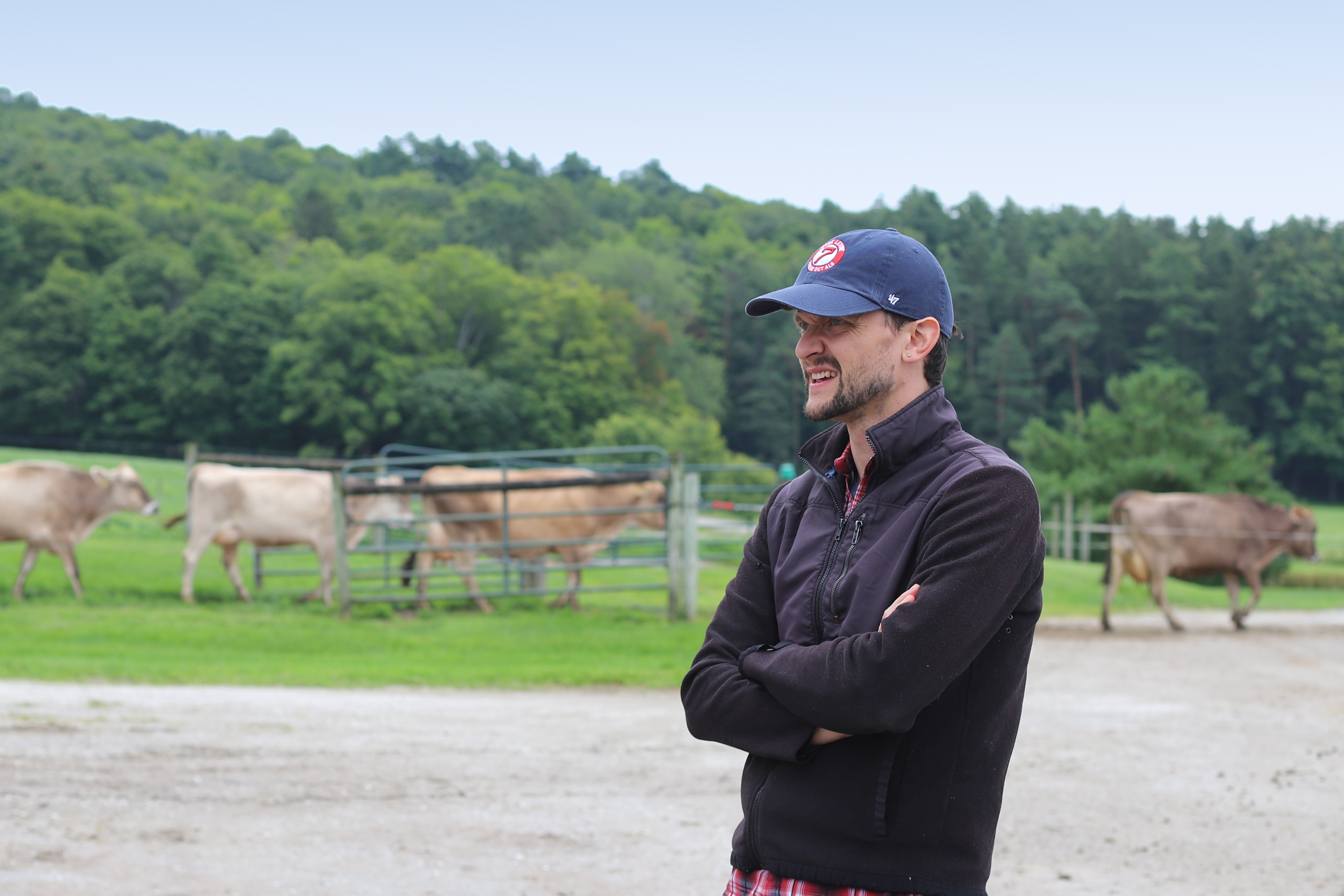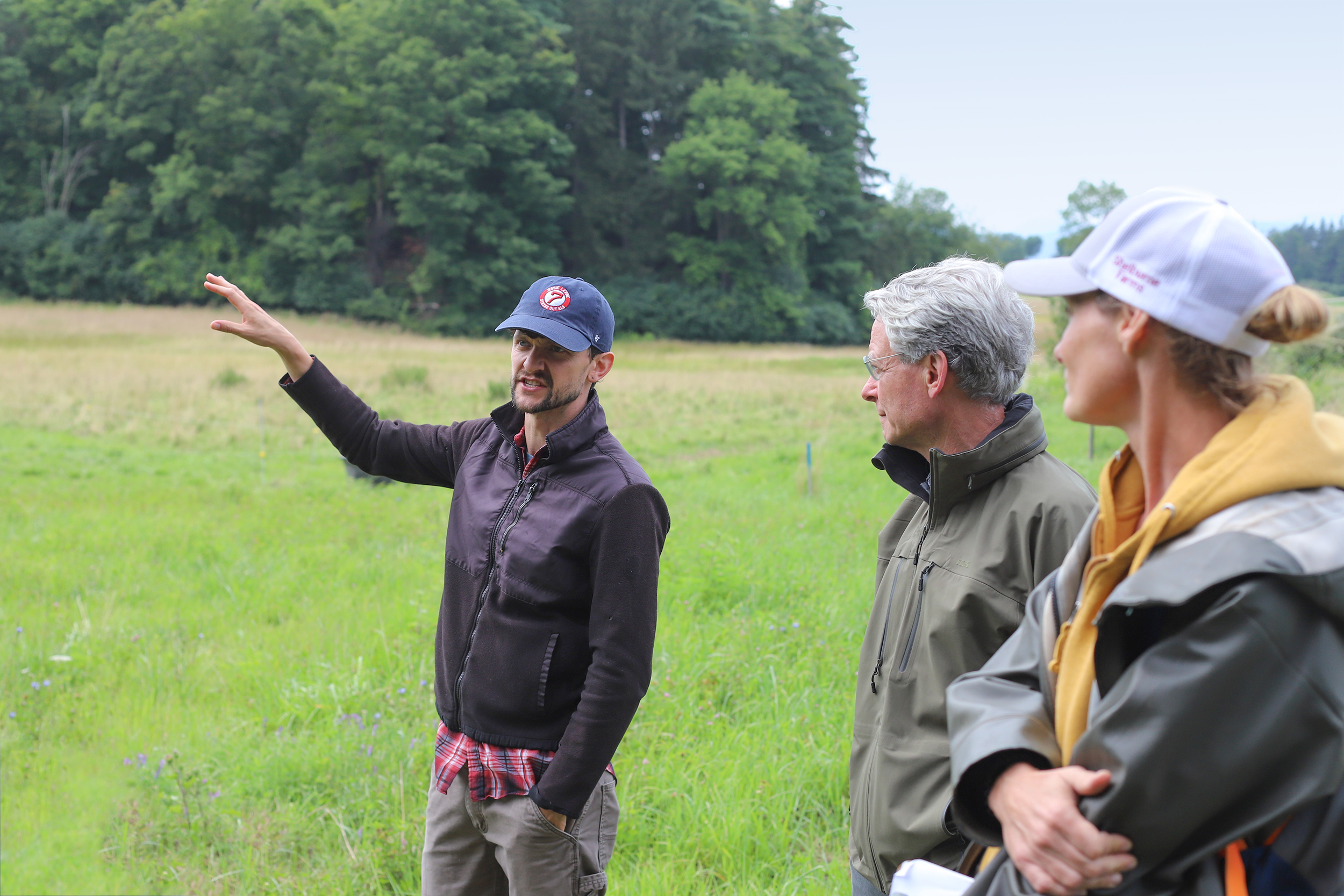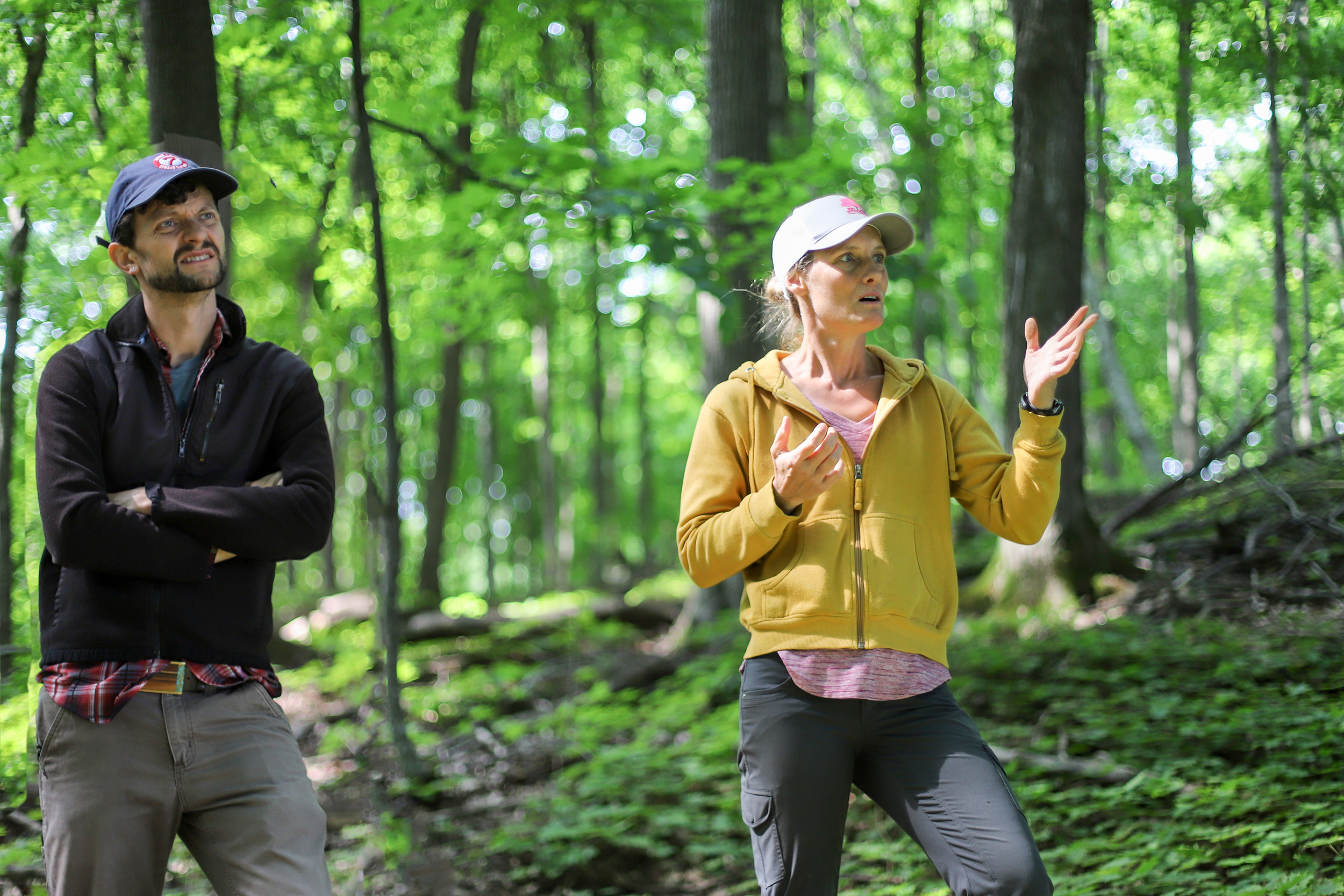I passed this information/article on to my brother who is a Vermont State Senator who has been creating environmentally supportive legislation in Montpelier that the governor has been vetoing. I am also sending this to my granddaughter who is a senior at UVM with a major in Environmental Sciences.
Climate Action Planning for Net Zero by 2028
Connor Stedman is a PhD student in the UVM Transdisciplinary Leadership program, and has an MS in ecological planning from UVM. Over the past decade, he’s worked with large landholding nonprofits and consumer goods brands around their agricultural supply chains and greenhouse gas emissions. He is working with Shelburne Farms to support us in developing a Climate Action Plan for our 1,400-acre farm.
Shelburne Farms has set a goal to achieve net zero by 2028—capturing more greenhouse gasses than we produce onsite. How do you go about tackling a goal like that? We sat down with Connor Stedman to find out.

Where do you start a plan to achieve a climate goal?
With any kind of quantitative goal, you have to draw boundaries around what you’re including and not including. Early on in developing the goal, Shelburne Farms decided to draw the line around the land held by the nonprofit—the energy use, emissions and carbon sequestration right on the farm.
The first part of the equation is “decarbonizing” how energy is produced for the farm. The second part, which is my focus, is addressing the sources of emissions and sequestration related to farm operations and land use.
One thing I think is really worth saying at the outset. People often think that reducing greenhouse gas emissions and sequestering carbon work the same way—as mirror opposites. They imagine that taking carbon out of the atmosphere and storing it somewhere is just like reversing emissions. But that's not how it works. Carbon sequestration is a process that takes place over years—sometimes decades—and it’s fragile and reversible, vulnerable to future changes in land use. It’s not an equivalent substitute to reducing emissions now.
So the approach Shelburne Farms is taking is to focus on decarbonizing energy production and cutting emissions in the next five years, and then to comprehensively increase the land’s ability to store carbon.
How do you measure progress towards this goal? How is Shelburne Farms approaching that?
We’re talking about biogeochemical cycles for three climate gasses: carbon, methane, and nitrous oxide. These gasses move between the atmosphere, living things, dead things, and then really dead things.
Carbon dioxide enters a stable or semi-stable state through photosynthesis, which puts the carbon into long chain carbon molecules in wood and perennial plant tissues. Some goes into soil through the plant’s metabolism. Animals that eat these plants digest those long chain carbon molecules in their gut. And multi-stomach animals like cows produce methane gas in their stomachs through anaerobic decomposition of carbon. It sounds funny to say, but the belching of cows then releases a significant amount of methane. The other source of methane is their manure. (Nitrous oxide, the third gas, is a byproduct of urine oxidation).
With a few exceptions, directly measuring these gasses is prohibitively expensive and impractical. So we’re using a combination of measurement and modeling.
What is the farm’s biggest challenge to reaching net zero by 2028?
The short term imperative is emissions reduction. So I'd say the number one question is, What does it take to make the property run on renewable energy? What changes to infrastructure, or the means of energy production, or renovations of buildings are needed? The number two question is, What does it take to cut emissions from the farm itself? That's not as straightforward as replacing fossil fuels with a solar panel. And over 30 years ago, most of the land that was in corn or barley was turned into permanent, managed pasture. That's a major regaining of soil carbon that’s already been done.
The place to go further, then, is in these innovations around methane reduction, which I know [dairy farm manager] Sam is really invested in and excited about. Then it’s figuring out where and how to plant more trees on the property to store more carbon over the long-term. The methane work is more experimental, and the carbon sequestration work in trees is slower, realized over decades. A next step is to revise the farm’s forest management plan. The current plan is an amazing document; but it was not originally conceived with maximizing carbon sequestration and climate resilience as a central goal.

How do you “model” greenhouse gas emissions?
COMET is a giant greenhouse gas calculator for farms that was produced by the Department of Agriculture out of the University of Colorado. Based on data we enter on our inputs and practices, the software models our carbon dioxide emissions from fuel use, methane emissions from ruminant animals, and nitrous oxide emissions from cropping systems and manure decomposition. It's really quite an accomplishment.
And we can report on the inputs and practices with a lot of precision and accuracy. Fuel use is based on purchased quantities. We also can precisely report on feed inputs, number of animals, their ages, weights, sexes, and how they’re managed. So that's the starting point.
But COMET doesn’t model sequestration well. The program was developed where the bulk of U.S. commodity commercial agriculture is, so it is really tuned to the ground conditions of farms in the Midwest, where soils, forests, and farm management is so different. We're going to need a different methodology for measuring sequestration.
One way is to implement a soil carbon measurement study over the next three to five years. Shelburne Farms is not a research institution, so it looks to do these studies in partnership with others, which also provides significant educational crossover opportunities.
The farm is also using some innovative practices to reduce methane and plans to experiment with more (More on that in a later blog). COMET does not have the ability to calculate how these practices might affect emissions. We’d like to form another research partnership to study these practices, using equipment that can directly measure methane gas from a manure pit. It's really the one place in Shelburne Farms greenhouse gas system where we think it makes sense to try to directly measure a gas to track changes. There are a number of exciting research questions, and a lot of educational and research partnership potential as well.
What will make you confident that Shelburne Farms has achieved its goal?
The sequestration stuff is exciting, it's important, and it leads to actions on the ground that a lot of people can get involved in and learn so much from. But the sustained focus on reducing emissions is really what's going to determine whether we reach that net zero goal.
And there's always going to be year over year variability, which can sometimes be significant. If we're doing a renovation cut on a forest stand to reset succession towards old growth conditions, that might lead to a lot of carbon loss that year. If there’s a significant capital infrastructure action, there might be a lot of carbon saved. So it’s better to think of net zero as a rolling average, where across any given set of three or five years, we are holding steady to net zero or carbon negative.
For me, the confidence comes from the earnest desire of people here to measure and report things accurately. The whole challenge right now with the world of carbon offsets is that it incentivizes you to under report emissions and over report sequestration. That's exactly the opposite of what we need for the climate change trajectory. We need to, if anything, be more conservative around estimating emissions and sequestration. Here, there is earnest willingness to do that, and a real interest in how we can reduce emissions further.
How does this project compare to other organizations and nonprofits or brands you're consulting on?
It's simpler in a lot of ways because what we're measuring and modeling has boundaries. For consumer companies that produce dairy or food products, more than half of their emissions are coming way downstream—from places like Shelburne Farms that give them raw materials. It’s quite a challenge to figure out how to exert more control over the emissions footprint of their products. (As an aside, while the farm ships cheese, those transport emissions are considered part of those purchasers’ carbon calculus. This is how most international standards measure business emissions.)
I'd say Shelburne Farms’ goal is also quite a bit more ambitious than most of the corporate climate goals that are being set right now. And I think that's appropriate for an educational organization that has a close to best-in-industry grass-based dairy farm management system already in place. It has the opportunity to do some really industry leading things around how the farm and forest are managed.

What excites you most about this work?
It excites me when people in organizations are able to fully focus on what the global situation is asking for. Because there are big structural incentives away from doing that. And the climate situation is not just an environmental crisis, it's a human rights crisis, so there's an ethical responsibility to take action. To me, it's exciting to have the chance to do some of that work. To say, “Okay, this actually is in our scope of responsibility—of what we can tackle and demonstrate and educate people about.”
A lot of climate solutions apply generic best practices uniformly everywhere. But Shelburne Farms is on unique land. It's on this peninsula that sticks out into Lake Champlain, it has a unique climate, and a very unique combination of soils and land use history and human presence. That uniqueness should inform what happens here and the strategies and pathways for being in relationship with the land here. So that excites me too. The invitation has been, “What's right to do here?” and to me that’s really significant.
Comments
Thank you, Connor. I am already seeing some of the initiatives of Connor's work come to fruition around the farm. Thank you for this enlightening, and easy to comprehend story about the most important project being done toward the future of the Farm - it is essential to our existence and to the entire planet. Progress like this is slow, like Connor said, but every little step is really acts as a big step forward.
I'm glad to see Connor, that you recognize some of the short comings of the COMET assessment program, namely it was not developed for the type of farming that we do in Vermont. I might suggest that you look at some of the European assessment programs which take into account grazing systems more accurately. I'd be happy to discuss and rather than put my email here let you know that Alec and Megan know how to get hold of me.
What John Roberts said.
Would be nice to hear an update here...
